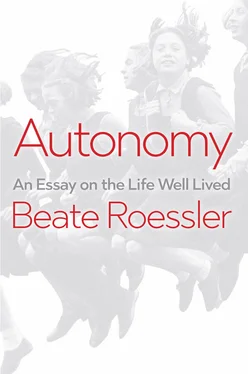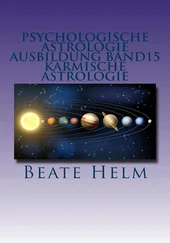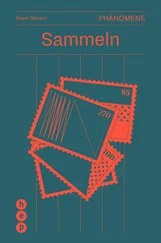But as part of this initial overview, let us also look at other forms of ambivalence that are not necessarily immediately paralyzing. For in contemporary discourse surrounding autonomy and action theory, ambivalence is also used in a broader sense to refer not only to conflicting feelings toward a single object or person but also to conflicting desires, motivations, and potential actions. Some approaches to the phenomenon of ambivalence even include all forms of uncertainty in decision-making, such as the problem of akrasia or weakness of will. We will see just how convincing this is.
For the moment, I would like to sketch three everyday conflicts of ambivalence. First, we can describe a conflict between two potential desired actions that seem impossible to prioritize and have the same positive connotations. An everyday example of such a conflict would be my desire to go to the cinema tonight conflicting with my desire to go to a concert tonight. Good reasons can be invoked for both options, and both may have comparably positive connotations for me (or be tied to comparable commitments). But I can only do one – the world is not set up for me to be able to do both. As easy as it might seem to prioritize one over the other, this could represent a real conflict for me. In more general terms, the conflict of ambivalence here arises from the combination of the contingency of the circumstances and the subjective preferences of the agent who doesn’t know what she wants, even if this is not a particularly dramatic conflict, as she could potentially go to the concert tonight and see a film tomorrow.
Second, there is the conflict between life plans or, more cautiously formulated, between two careers, e.g. when a person has a choice between becoming a poet or a farmer, a clarinetist or a lawyer. 8Here again, the person does not know what she wants and may find it extremely difficult to make a decision. This is a more dramatic conflict, not least because – let us assume – it is not possible to realize both options one after the other. If a person does not know what she wants, the structure of her reflections and will is ambivalent in a more existential way than in the first case, as the decision is much more momentous and will fundamentally determine her life. This is a form of what J. S. Swindell calls residual ambivalence , as the desires at issue cannot be prioritized and thus the ambivalence cannot be completely eliminated. 9
We can also describe a third kind of conflict in which the agent is thrown into a moral difficulty. One much-cited example of this is that of Agamemnon, who wants to save his army – and so actually has a positive option – but can only do so if he sacrifices his daughter. Such moral dilemmas are rightly also discussed as conflicts of ambivalence, as they are rooted in conflicting desires and conflicting moral demands and because the persons affected cannot come to a decision without conflicting emotions. Another example of this form of ambivalence can be found in Bernard Williams’s “Critique of Utilitarianism.” 10George, an out-of-work chemist who is involved in a number of different projects for peace, is given the opportunity to accept a position in a research laboratory developing chemical and biological weapons. George has to take care of his family, and, if he doesn’t accept the position, another person will take it who will pursue the research with much greater zeal than he would. What, then, should he do? He of course has moral obligations toward his family – but do these extend so far that he must give up his ethical projects, his engagement for peace?
Conflicts of ambivalence can thus be moral as well as prudential or ethical in nature. The boundaries between the two cannot always be clearly drawn, not in the case of Agamemnon (who confronts a both moral and ethical conflict) and certainly not in the case of George the chemist. 11In this book, I am above all interested in the kinds of conflicts that concern me as an individual person and the ethical question of whether I have lived my life well, although those that concern me as a moral agent can always play a role here. The form of a moral conflict is slightly – but significantly – different from that of an ethical conflict, however. The former involves the question of what a person ought to do (in a moral sense) in a conflict of decision-making, while the latter concerns the question of what a person wants to do . But, as noted above, the two cannot always be clearly separated, and there are interesting hybrid conflicts, such as the famous case of Paul Gauguin, who abandoned his family to travel to Tahiti and paint. 12One could argue that Gauguin had a moral obligation to stay with his wife and children, but he certainly also had good – ethical – reasons to travel to Tahiti and dedicate himself to his art. 13In common, everyday conflicts of ambivalence, the source of the ambivalence is typically to be found in the individual desires and beliefs of the subject herself, although moral considerations can always be taken into account. Ethical problems of ambivalence, in this sense, have a contingent basis but are unavoidable, and can concern trivial as well as existential action situations.
But the spectrum of ambivalences in our daily life is even broader. First, there is the already-mentioned phenomenon of akrasia or weakness of the will, which some authors also describe as a conflict of ambivalence. 14Depending on how one defines weakness of the will, it could indeed be understood as a form of ambivalence, although I do not find this very convincing. It is different precisely because a weak-willed person knows what she ought to do. She knows what would be best for her, but she does not do it, and indeed decides to take a different course of action against her own judgment. 15Hence akrasia is not really a problem of ambivalence; I will return to this problem in chapter 6in the context of the question of the good life and the rational behavior that might be necessary for it. However, conflicts concerning different roles or, even more so, different cultural identities fall much more clearly into the category of ambivalence. Schechtman, as mentioned above, describes the example of a lawyer who finds herself in a conflict of action. The ambivalence here concerns the question of who – i.e. which person – she wants to consider herself to be in a specific situation: a good mother or a good attorney. Calhoun illustrates the even more profound conflict of a lesbian Latina who must constantly move between the macho culture of her family, to whom she is attached, and her homosexual social circle. 16This is a conflict of values and value frames that, in contrast to the other examples of ambivalence we have discussed, demands something more than and different from an integrative autonomy. It demands not only that the ambivalent, autonomous person prioritize or clearly decide in favor of one or the other possible course of action, but also that they switch between their different identities. I will also return to this conflict in greater detail below.
Ambivalence can thus involve conflicting feelings, desires, motivations, and intentions, as well as conflicting roles and cultural identities. This means, in more general terms, that a person is ambivalent when she initially cannot decide, for good reasons, between two possible actions or between two evaluations or value frames but nevertheless must make a decision in a given situation because she has to act. Rorty plausibly calls ambivalence “appropriate” when a person has reasonable grounds for both possible actions or for both allegiances and identities, i.e. when she has good reasons not to simply cast one of the potential actions aside. 17For the most part, such conflicts typically have two dimensions: time and value. They arise from a need to act (What do I want to do now?) and/or from a collision of values (What is more important to me?), given the fact that both options cannot be realized at the same time. At least, this is the case with conflicts involving the (im)possibility of prioritizing, moral conflicts and hybrid ethical-moral conflicts, and, in a different way, the kinds of cultural conflicts, conflicts of roles or affiliations, mentioned above.
Читать дальше












